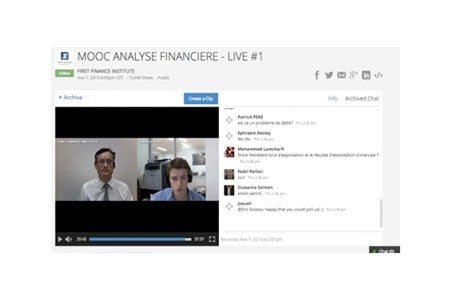The quick fix for online education: Make instructors binge on TED talks
In a 2010 talk, TED curator Chris Anderson describes the concept of “crowd-accelerated innovation”—a self-fueling cycle of learning which has accelerated through the ubiquity of web-based video. In Anderson’s view, this mechanism of iteration and immediate feedback has made the Ted Talk and many other iterative processes evolve in dramatic ways. Anderson explains that part of the reason TED evolved so quickly is that you had some of the best and most creative individuals in the world prepare extensively for their talk by watching their predecessors. Through this iterative process, the presentations consistently improve—if only out of fear of disappointing their audience. This phenomenon can also be felt in many areas of society from dance to politics but also underpins the innovation going on in the rapidly evolving landscape for Massive Open Online Courses (MOOCs).


In a 2010 talk, TED curator Chris Anderson describes the concept of “crowd-accelerated innovation”—a self-fueling cycle of learning which has accelerated through the ubiquity of web-based video. In Anderson’s view, this mechanism of iteration and immediate feedback has made the Ted Talk and many other iterative processes evolve in dramatic ways. Anderson explains that part of the reason TED evolved so quickly is that you had some of the best and most creative individuals in the world prepare extensively for their talk by watching their predecessors. Through this iterative process, the presentations consistently improve—if only out of fear of disappointing their audience. This phenomenon can also be felt in many areas of society from dance to politics but also underpins the innovation going on in the rapidly evolving landscape for Massive Open Online Courses (MOOCs).
With thousands of students enrolling in each MOOC, the amount of student feedback is exponentially greater than what a faculty member would receive in a traditional academic setting. Consider that a traditional higher education class size is 10 to 200 students, while MOOC s can range from 3,000-250,000 per class. Moreover, MOOC course instructors can also see for essentially the first time the latest methods and styles their peers at other institutions are employing to determine which course components work and which don’t.
In 2013, our Paris-based company First Finance launched our first MOOC, one of the first-ever taught in French. After studying dozens of MOOCs, it became clear that many of the existing courses had incredible instructors with great content but few embraced a hands-on, practical approach (particularly in finance and business) while even fewer had fully integrated a live forum to facilitate the interactivity students crave. For our first MOOC, we partnered with Pascal Quiry, an investment banker and corporate finance educator, one of the most respected finance thought leaders in the French-speaking world.
To enhance interactivity, we integrated the web-based video platform Spreecast into our course. Spreecast (founded by former StubHub founder and CEO Jeff Fluhr) provides collaborative web-based video functionality. Used by the likes of Anderson Cooper, ESPN, and the Wall Street Journal, it allows the video leader to present material while viewers can ask questions in real-time via chat functionality.

The hands-on nature of our course combined with the added functionality of Spreecast greatly enhanced the student experience and helped drive our course completion rates to 20% versus the industry average of 5%. A post-training survey showed that 98% of the participants were satisfied with the MOOC and 90% said they are willing to participate in another.
Notably, 40% of our enrollees in the first MOOC came from French-speaking Africa. This speaks to the demand in those countries for world-class instruction taught in their native language. And it is free; all they need is a log-in to participate, further lowering the barrier to learn.
I believe our success with practical yet hands-on interaction can be applied universally to potential students anywhere and in any language. And it is as evidenced by the live “office hours” functionality through Spreecast, the amazing production quality of Robert Ghrist’s calculus course, “The Day of Compassion” offered by Wesleyan University, or dozens of other innovations, MOOCs are evolving at a rapid rate.
At a recent conference, Daphne Koller, the CEO of Coursera (the largest MOOC provider), compared the evolution of MOOCs to the experience of the film industry, which in its early days just filmed theater plays and has now evolved in a way that no one would have thought possible. Similarly, just two years ago the standard for online courses was filming a classroom lecture from the back of the hall, which today already seems antiquated.
With the avalanche of direct feedback that is now available, does anyone really think we are anywhere but at the beginning of this trend? With the ever-growing number of MOOCs learning from one another, crowd-sourcing the best practices, and from one another, we can only imagine what a MOOC course will look like in a few years.